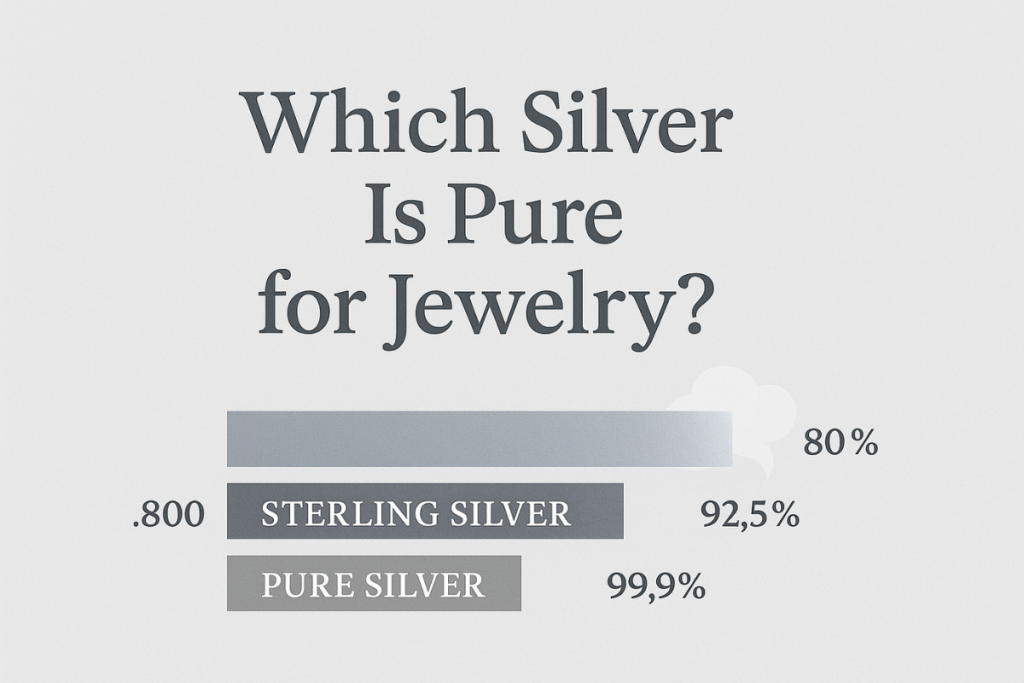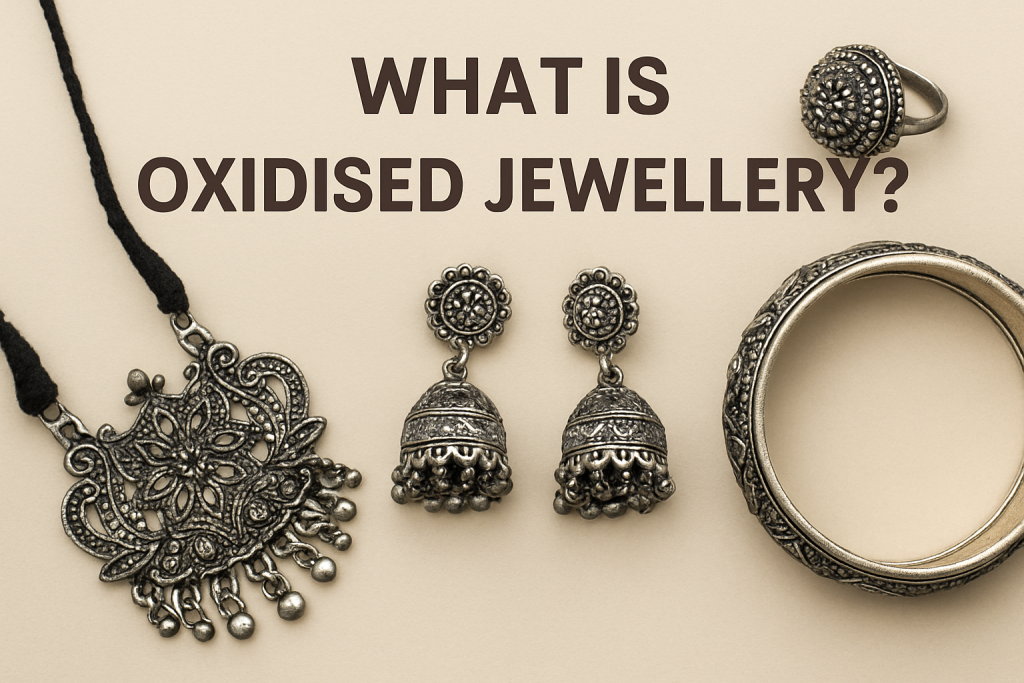
When selecting the perfect piece of silver jewelry, most people consider purity. With all the different variations, determining which silver is actually pure and good enough for jewelry can be overwhelming. To assist you in making an informed choice, this blog explains all you need to know about silver purity, metals added to jewelry silver, and why some are more practical and appealing than others.
The Meaning of Silver Purity
Silver purity is the percentage of pure silver present in an alloy metal. Due to the softness and malleability of pure silver, jewelers often alloy it with other metals in order to enhance its strength and hardness, particularly for use in jewelry. Thus, when we mention silver purity, we normally imply the percentage content of silver in an object.
For instance, an item labeled “925 silver” has 92.5% pure silver and 7.5% of another metal, commonly copper. Conversely, “999 silver” or “fine silver” has 99.9% pure silver and is the highest quality.
Types of Silver Used in Jewelry
Knowing the various types of silver can assist you in selecting the best to use in your jewelry. Let us take a look at the most popular types:
1. Fine Silver (999 Silver)
Fine silver contains 99.9% silver that is pure. Since it contains purity content, it is very soft and prone to scratches, bending, and shape loss. Although it’s theoretically purest, it’s not commonly used for jewelry work that requires longevity.
But fine silver is tarnish-resistant and ideal for items that are not worn daily, such as earrings or pendants. For individuals who prioritize purity over strength, fine silver is a suitable option.
2. Sterling Silver (925 Silver)
Sterling silver is silver most commonly used in jewelry crafting. It consists of 92.5% fine silver and 7.5% of some other material, usually copper. This combines the best of two worlds—maximum silver content and added durability.
Apart from being less expensive than fine silver, sterling silver does not tend to lose its shape with age as well. Beyond that, sterling silver enables skilled workers to use their expertise and create delicate and intricate designs along with detailed works that can cope with daily handling.
3. Coin Silver (900 Silver)
Coin silver used to be produced by melting down silver coins, which were approximately 90% silver.While not popularly used for modern jewelry-making, certain antiques or vintage pieces can be made using coin silver. Even though less pure than sterling, it is still worth something.
4. Argentium Silver
A newer alternative to traditional sterling silver, Argentium silver contains a higher percentage of pure silver (93.5% or 96%) and is alloyed with germanium. Consequently, it’s more resistant to tarnish and hypoallergenic than sterling silver.
Argentium silver is becoming increasingly popular due to its brilliance, durability, and low-maintenance nature. It’s also eco-friendly, which makes it a choice among environmentally conscious consumers.
5. Nickel Silver or German Silver
Even though it is called nickel silver, it does not contain any real silver. Instead, it is composed of a mixture of nickel, copper, and zinc. As such, it is not true silver and is used primarily for inexpensive costume jewelry. While it can be fashioned to look like silver, it has no intrinsic value as far as purity goes.
Which Silver is the Purest
Indeed, fine silver (999) is the purest silver. It contains nearly 100% pure silver, and it is the highest quality silver. However, its soft nature limits its applicability to day-to-day jewelry.
But yet, sterling silver (925) is the ultimate compromise between purity and practicability. It is best ideal for rings, bracelets, necklaces, and other wearables due to its strength and charm.
How to Recognize Pure Silver in Jewelry
It is crucial to recognize genuine silver while purchasing quality jewelry. Here are some of the methods to recognize pure or genuine silver:
1. Look for Hallmarks
Silver jewelry pieces typically carry hallmarks that specify their purity percentage. For example, “925” indicates sterling silver, “999” indicates fine silver, and “900” indicates coin silver. Always search for these hallmarks.
2. Magnet Test
Pure silver is not magnetic. If your jewelry is magnetized, then it might not be real silver.
3. Do a Rub Test
Rubbing silver against a white cloth should produce black marks because of oxidation, which is a natural characteristic of silver. If marks do not appear, the product might not be real silver.
4. Purchase from Reputable Sellers
To ensure authenticity, purchase silver jewelry from reputable jewelers or legitimate online retailers providing certificates of authenticity.
Why Pure Silver for Jewelry?
There are several sound reasons to employ more pure varieties of silver:
- Hypoallergenic Features: Well-quality silver and sterling silver of superior quality are less likely to cause allergic reactions.
- Investment Quality: Higher purity silver contains more inherent value and can be used as an investment.
- Aesthetic Value: Pure silver possesses a brilliant white luster that enhances its beauty and sophistication.
- Workmanship: Jewelers use sterling or fine silver due to their malleability and capacity to accept intricate designs.
Disadvantages of Using Pure Silver
Although it’s so gorgeous, pure silver has a few drawbacks:
- Softness: It’s softer to dent, bend, and scratch.
- Cost: The higher the purity, the more costly it is.
- Limited Application: Not suitable for daily jewelry items that need to be tough.
Conclusion: Which Silver Should You Buy?
Even though 999 fine silver is the highest purity, it isn’t suitable for day-to-day jewelry. Sterling silver (925) gives you a real compromise of purity, durability, and cost and thus is the most preferred for consumers as well as designers.
Whether you are buying a special gift or an everyday item, understanding silver purity makes you a wiser consumer. Think about your fashion sense, lifestyle, and sensitivities to choose jewelry that suits your requirements without sacrificing beauty and quality.
So the next time you sport a silver necklace or earrings that shine, recall: purity is not a number—it’s a promise of quality, beauty, and enduring allure.

